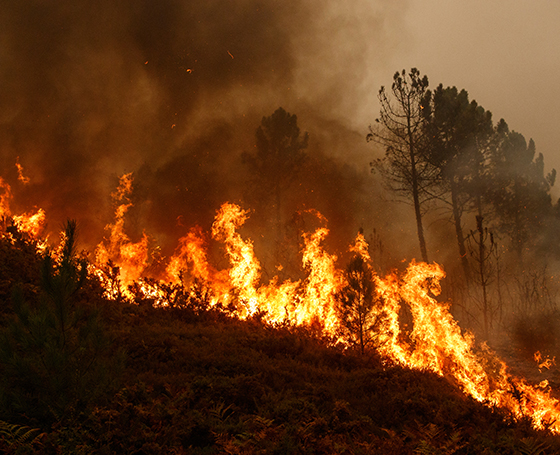BACKGROUND
Early 2017 saw TETRA Ireland began preparations for the migration of the Irish Fire Service onto the National Digital Radio Service (NDRS), operated by TETRA Ireland.
Working closely with the Irish Fire Service Ctrí project team, which is the project team charged with delivery of the next generation of fire service communications and Command & Control Systems. TETRA Ireland and the Irish Fire Service project team finalised budgeting and prioritised key migration components including group call design and fleet mapping, as well as logistics services and site readiness planning.
The objective was to achieve national roll-out within a 12 month period. The migration to the NDRS was at the core of an overall project to upgrade the national Fire Service's communications and command and control systems.

OBJECTIVES
The key objective was to migrate the 3 existing Regional control centres, Munster, Western & Eastern Regions, to the NDRS. Thus giving the RCC’s the ability to be interconnected and capable of despatching, monitoring and communicating with each other region's Fire Service resources over a single national platform.
MIGRATION
Ctrí project personnel undertook a rigorous and exhaustive network & hardware evaluation and testing programme, in order to ensure that every aspect of the TETRA network & hardware functionality met or exceeded the agreed SLA.
A TETRA Ireland and Fire Service working group determined that the most effective way to achieve a successful migration would be to implement in 3 phases, based around a specific training programme encompassing the Regional control centres. In order to deliver a common national standard, as well as the technical considerations, quality management and control centre procedures also had to be standardised.
For that reason, during the first phase of the migration, TETRA Ireland worked hand in hand with Ctrí to devise and deliver intensive 'train the trainer' programmes, which enabled Fire Service personnel to efficiently cascade knowledge and details of protocols and procedures throughout the organisation.
The first control centre to come online was the MRCC, which is currently serving the Munster counties. Tipperary, Clare and Limerick are live with Waterford, Kerry, Cork City and County, to be complete by late October. The ERCC and WRCC will follow with Wexford the first county to go live in those regions.
Integration
At an operational level, individual Fire Service personnel can now call for assistance with the single touch of a button, improving safety, reducing response times from the Control Centre and colleagues.
Interoperability
Interoperability is a huge advantage on the Tetra Ireland network, with members of the Fire Service now able to communicate directly or establish discreet talk groups with other first responder organisations already well established on the network such as An Garda Síochána, the National Ambulance Service, Irish Coast Guard, Civil Defence and the Mountain Rescue Teams
Coverage
And of course the NDRS network has robustness and resilience built-in, both in terms of capacity and coverage, so when attending any call out, the national Fire Service can be confident that the NDRS Network has the capacity, landmass and in-building coverage to serve it's needs, and help keep it Fire Service personnel and the public safer.




